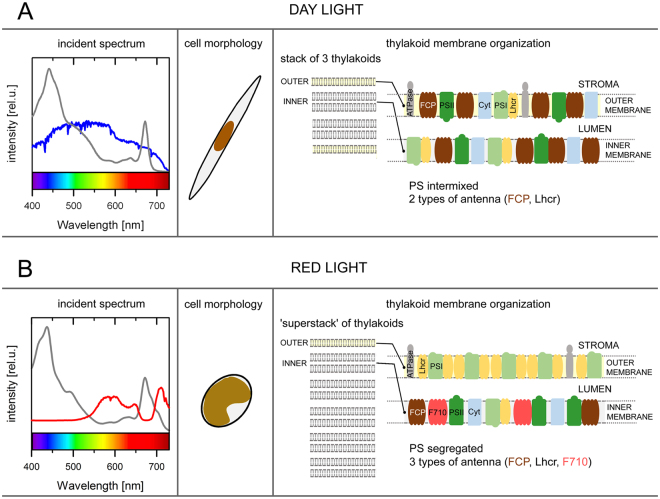Figure 4.
A model summarizing the differences in the thylakoid architecture and photosynthetic apparatus organization in the pennate diatom P. tricornutum acclimated to different quality of incident light, corresponding to (A) planktonic or (B) benthic conditions. Left panels show spectra of daylight (AM1.5 global-ASTM G173 in photons·m-2) filtered by water absorption (0.5 meter depth, blue) and daylight spectrum affected by water absorption as well as absorption of the photosynthetic pigments (red). Gray lines correspond to the absorption spectra of the typical light harvesting antennae (FCP or F710, respectively) adopted from Fig. 1C. Middle panels present dominant cell morphotypes while right panels show thylakoid membrane models based on current understanding of the chromatic acclimation in P. tricornutum. Under the DL conditions (A), cells are present mostly in the fusiform morphotype, the photosystems (PS) are randomly distributed on thylakoids organized in triplets, and light is harvested by two antenna types. In contrast, RL (B) induces i) formation of thylakoid “superstacks”; ii) photosystem I segregation. The PSI-rich regions (shown here) are devoid of other components of electron transport chain27; iii) production of an additional light-harvesting antenna with red-shifted absorption that consists of oligomers composed solely of the Lhcf15 protein. The acclimation to RL conditions is also accompanied by a marked change in the cell morphology.

